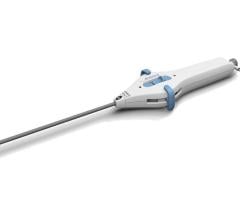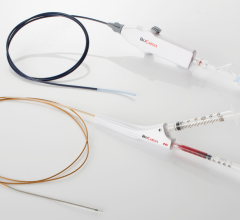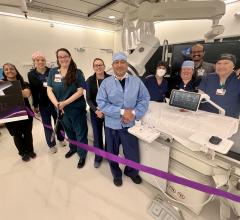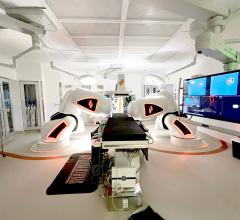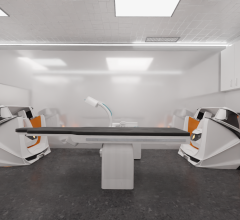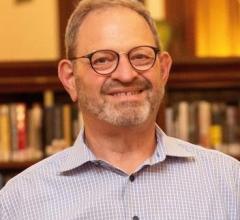
Image courtesy of ACLS Certification Institute
December 5, 2018 — Supraventricular tachycardia (SVT) is a common heart abnormality that presents as a fast heart rate. SVT is a generic term applied to any tachycardia originating above the ventricles and which involves atrial tissue or atrioventricular (AV) nodal tissue4. This heart rhythm disturbance can occur in healthy individuals and may include such symptoms as chest pain, palpitations, shortness of breath, sweating, feeling faint, and, rarely, unconsciousness may occur. The incidence of SVT is approximately 35 cases per 100,000 patients with a prevalence of 2.25 cases per 1,000 in the general population2.
Treating SVT usually involves a combination of vagal maneuvers (VM), medications or electrical therapy4. The use of VM as a first-line management tool for the reversion of SVT in both emergency medicine and prehospital emergency-care setting requires continuous examination and refinement to define both its appropriateness and effectiveness3.
In order to understand how a vagal maneuver works to slow or terminate a rapid heart rate, it is important to understand the pathophysiology underlying SVT. SVT is a rapid heartbeat which originates in the chambers above the ventricles. It can occur due to a variety of reasons, such as structural abnormalities and heart failure. The use of VM for SVT management also requires defining what constitutes a supraventricular arrhythmia and how this can be effectively terminated through increased myocardial refractoriness3. There are multiple classifications of SVT, based on the electrical pathway which is taken from the atria:
Atrioventricular Nodal Reentrant Tachycardia (AVNRT) – This is the most commonly encountered paroxysmal SVT2. Patients with AVNRT demonstrate dual atrioventricular nodal inputs with differing electrophysiologic properties, the fast and slow pathways that act as the two limbs of the reentrant circuit. The fast pathway inputs near the compact AV node, and the slow pathway inputs near the os of the coronary sinus.
Atrioventricular Reentrant Tachycardia (AVRT) – The mechanism of AVRT differs in the existence of accessory pathways (bundles of Kent). These conductive accessory pathways pass through the atrioventricular septum and thus provide for a larger re-entry circuit, albeit one that passes through the AV node and is similarly affected by increased vagal tone4.
The vagus nerve supplies parasympathetic motor fibers to the myocardium. VM involve different techniques used to stimulate aortic baroreceptors located within the walls of the aortic arch and within the carotid bodies. These receptors trigger an increase in vagal tone, which stimulates a bradycardia response at the level of the AV node. This acts to prolong refractoriness of the nodal tissue and disrupt the re-entry circuit3.
Vagal Maneuver Techniques
Multiple variations of VM have been used in medicine. These include:
-
Coughing: Coughing creates the same physiological response as bearing down (see below), but can be easier to perform. The cough must be forceful and sustained (i.e., a single cough will likely not be effective in terminating an arrhythmia).
-
Cold Stimulus to the Face: This technique involves immersing a patient’s face in ice-cold water. Alternative methods include placing an icepack on the face or a washcloth soaked in ice water. The cold stimuli to the face should last about 10 seconds. This creates a physiological response similar to a person being submerged in cold water (Diver’s Reflex).
-
Carotid Massage: This technique is performed with the patient’s neck in an extended position, the head turned away from the side being massaged. Only one side should be massaged at a time. Pressure is applied underneath the angle of the jaw in a gentle circular motion for about 10 seconds. The patient should be monitored throughout. Note that this technique is not recommended for everyone. Patients who have carotid artery stenosis and a history of smoking, for example, may not be good candidates for the procedure.
-
Gagging: Gagging stimulates the vagus nerve and can stop an episode of SVT. A tongue depressor is briefly inserted into the patient’s mouth, touching the back of the throat, which causes the person to reflexively gag. The gag reflex stimulates the vagus nerve.
-
Bearing Down: Medically referred to as the Valsalva Maneuver, this technique is one of the most common ways to stimulate the vagus nerve. The patient is instructed to bear down as if they were having a bowel movement. In effect, the patient is expiring against a closed glottis. An alternative way to perform a Valsalva Maneuver is to tell the patient to blow through an occluded straw or barrel of a 10 ml syringe for 15-20 seconds. These maneuvers increase intrathoracic pressure and stimulate the vagus nerve.
Four Phases of Valsalva Maneuver
The first explanation behind the process of using a Valsalva Maneuver was described in 1936 by Hamilton et al. and is still recognized for its accuracy today1. They described four phases that occur when a maneuver is attempted:
-
A transient increase in aortic pressure and a compensatory decrease in heart rate due to increased intrathoracic pressure generated during early breath holding and exertion against a defined resistance.
-
End of the transient period, with decreasing aortic pressure (and accompanying baroreceptor stimulation) and increasing heart rate.
-
End of the strain phase of the maneuver, with decreasing aortic pressure and compensatory rise in heart rate (late in phase 3).
-
Increased venous return leading to increasing aortic pressure and compensatory decrease in heart rate (return to resting heart rate late in the phase).
The pathophysiological basis of action of the four phases of the maneuver is based on the nature of increased refractoriness of AV nodal tissue, particularly on the effect of vagal activity. This occurs through increased intrathoracic pressure leading to baroreceptor stimulation, as demonstrated through the heart rate and blood pressure responses4.
The best available evidence currently, specifically the work of Taylor and Wong (2004), supports the following three criteria in an evidence-based model of practice of the Valsalva Maneuver for SVT reversion in the emergency-care setting:
-
Supine posturing – maximum baroreflex sensitivity is achieved in the supine position, with syncope and other side effects more likely to be observed in patients sitting or standing4.
-
15-second duration of strain – commonly used durations are 15 and 20 seconds, with the first suggested for the emergency setting and the longer duration recommended for the diagnostic setting. Overall, the duration must maximize the autonomic response and be tolerable by the patient in order to be effective4.
-
An intrathoracic/intraoral pressure (open glottis) of 40mmHg – studies suggest that pressure levels of 30mmHg or lower are ineffective in generating appropriate vagal response, or that pressure levels above 50mmHg are likely to result in the onset of side effects such as retinal hemorrhage or stroke. The use of 40mmHg as a safe pressure is supported4.
Precautions
Patients should be instructed how to perform VM properly before attempting one. In addition, carotid massage is only recommended for select patients and may only be performed by a physician.
It is essential to understand that it is not always appropriate to have a patient attempt VM. For instance, if the patient has SVT and is unstable, VM may delay definitive treatment such as cardioversion. Some potential complications include dizziness and an arrhythmia originating in the ventricles.
Most patients can easily be taught how to perform VM and they can be done almost anywhere. If a physician ensures a patient is an appropriate candidate for VM, the patient can be instructed to perform maneuvers at home in some situations.
The management of SVT using VM has relied on a centuries-old procedure, which has undergone only minor modification over time. The identification of specific types of nodal re-entrant tachycardia may, with further research, identify which SVT rhythm may best revert using VM in the early stages of arrhythmia. Further prehospital and emergency department research may provide benefit to VM practice by examining the duration of symptoms and reversion success, an appropriate restitution time between VM attempts, and the number of VM attempts that produce maximum reversion effect before other therapeutic intervention3.
For more information: www.acls.com
Author’s note: This information was provided by the ACLS Certification Institute, an online provider of emergency life support certification training.
References


 April 21, 2025
April 21, 2025 
